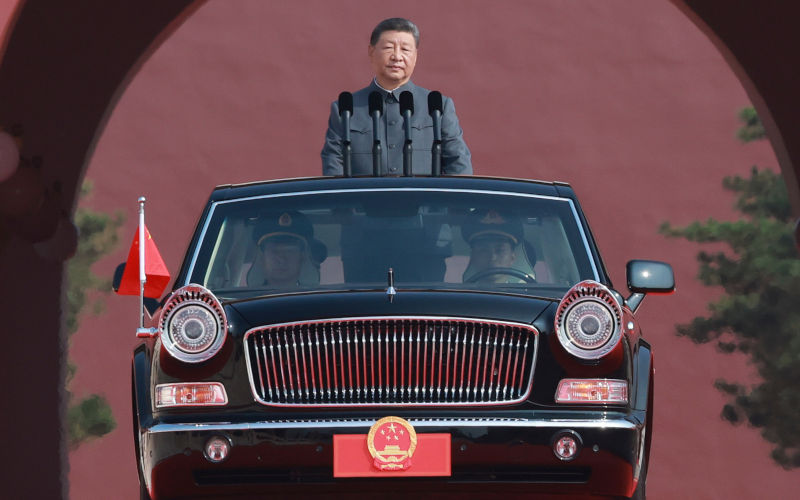Xi’s parade tips the diplomatic balance sheet in Asia
September 10, 2025
Beijing’s rapid military transformation and capacity to ultimately confront the US and its allies in policy and military terms was on full display recently.
Fifteen years ago, while studying in Washington, this columnist entertained a senior Australian diplomat to dinner on Tennessee Avenue in Capitol Hill. That evening the discussion turned to China’s military build-up. The official did not believe that the US helped its cause by constantly talking up China’s defence capabilities. But he also knew it had to. The Pentagon had been required by Congress since 1997 to submit an annual report on China’s military modernisation.
Over a meal of pumpkin soup, roast beef with béarnaise sauce, and finished by apple crumble with whipped cream, the Australian emissary assessed that it was all grossly overstated: “There was no chance China could gain military ascendancy over the US for at least another 30 years."
The official also strongly disagreed with a widely read essay that had been released that year by former Defence official Hugh White. White argued that the Americans had to get used to losing strategic primacy in Asia to China, and soon.
I recalled that conversation last week as images of Xi Jinping’s Second World War commemorative parade streamed across global media.
On full display was Beijing’s rapid military transformation, a challenge China obviously knew would ultimately confront the US and its allies in policy and military terms.
What is clearer now is China’s capacity to resist intimidation by the US. Which great state would not prepare to be in that position? Still, viewed from Tokyo and Taiwan, Xi’s parade would have been especially intimidatory.
But it was also aimed at Donald Trump. Consider, however, the respective balance sheets in Xi’s diplomacy over the past few weeks compared with that of the US president. Xi has hosted another meeting of the Shanghai Co-operation Organisation, which includes India, mended a decent part of the broken fence with Delhi and powwowed with leaders of what former ambassador to China Geoff Raby some years ago called China’s alternative bounded order.
Trump, on the other hand, has been not only outmanoeuvred by Putin, but out-paraded by Xi. The American president’s foreign policy remains unresolved.
Australian officials and leaders lace their rhetoric with the language of “uncertainty”. With good reason. But of little use now are the glib statements about American withdrawal from Asia, as if a definitive movement looms when the Stars and Stripes will lower from the flagpole on a US military base in Guam or Hawaii. Equally useless are the glib sentiments, held by the majority of the Australian Labor Party and the bureaucratic establishment, that the Americans are here to stay for ever. This week’s Financial Review Asia Summit is blessedly free of the glib and will confront some of the tough questions for Australia’s Asian present and future.
Canberra, at this point, does not have the best set of cards to play. It has no real relationship with the ruling house in Washington. So Prime Minister Albanese, despite shrill cat-calling from the stands, does what any solid opening batsman should in this situation: push for singles, leave the bouncers and occupy the crease, hoping to be still there when the new ball loses its sizzle.
But it remains imperative for the national security system to address the significant changes taking place in both relationships.
With the US, Australia confronts now a dramatically different ally, almost certainly forever. That must trouble a whole set of assumptions made over the past two decades concerning not only interoperability and interchangeability, but the very idea of American reliability in terms of war planning and conflict. Would Trump’s America even show up to a fight?
At the same time, the assumption of a US departure ignores that Trump is prone to the lurch in his foreign policy: he could very well lean in and seek a broader deal with China. Such a deal might abandon not only Japan and Taiwan, but undermine the entire US Asian alliance system.
Albanese has been looking to cautiously expand Australia’s relations with China, and the language on his recent visit certainly marked a clear departure from “stabilisation”: the rhetoric is now about “constructive engagement”.
But Australia’s future relationship with China will have to take shape in a radically different environment from that which has faced how policymakers have approached Asia from the end of World War II. Decolonisation, the rise of Asian nationalism, the Cold War and then the post-Cold War era have all been approached from a standpoint where America was, for good or ill, engaged.
What should be our response now? While the Chinese Communist Party is embedded in an authoritarian state, we still have to deal with the reality of China and fashion our own path towards economic and military security in that relationship.
The arguments to Japan and China have always been economic complementarity, and what remains critical to us is green iron and LNG succeeded by renewable energy, either hydrogen or other new technologies. Climate change has changed the economic calculus of comparative advantage, but the reality for Australia is that the dream of green steel, if it is to be realised, will require Chinese capital, technology and equipment, along with markets and Australia’s resources and renewable energy.
The ever-present tension between our economic well-being and perceptions of security is only going to become more pronounced. Buckle up for the multipolar world order.
Republished from Australian Financial Review, 7 September 2025
The views expressed in this article may or may not reflect those of Pearls and Irritations.

